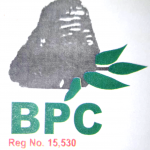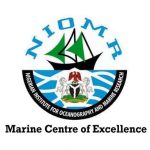Nigeria
International or regional conventions
Nigeria is not a member of the International Whaling Commission. However it is a member/signatory to the following international and regional Conventions related to cetacean conservation:
- Convention on Migratory Species (since 1987)
- The Abidjan convention
Confirmed observations
Olakunle and Akanbi (2014) reported three S. teuszii sightings in western Nigeria, totalling 33 individuals, but these are not documented in detail or supported with photos. Van Waerebeek et al. (2017) note that ‘The general lack of records in Nigeria can be attributed to scarce scientific observer effort.” The Van Waerebeek et al (2017) also report on at least three Sousa teuszii individuals that were dolphins killed in artisanal gillnets off Brass Island, Nigeria in 2011 and 2012.
Please also see some recent anecdotal reports published on this website: https://www.sousateuszii.org/2021/03/05/valuable-atlantic-humpback-dolphin-sightings-reported-from-lagos-nigeria/
Threats and trends
No abundance estimates or detailed information on threats are available for this country, although there is evidence that direct hunting of dolphins took place as recently as 2008-2009 and bycatch in artisanal gillnets was record in 2011 and 2012 (Uwagbae and Van Waerebeeek 2010 and Van Waerebeek et al 2017) .
Report
Report a sighting or stranding by emailing info@sousateuszii.org or the contact below.
Contacts
Prof. Edem Eniang
Rescue Centre Hotline:
+2348145536045.

https://biodiversitypreservationcenter.org/
Nigerian Institute for Oceanography and Marine Research (NIOMR)

https://www.niomr.gov.ng/
Relevant country-specific references
- Collins, T., 2015. Re-assessment of the Conservation Status of the Atlantic Humpback Dolphin (Sousa teuszii), Using the IUCN Red List Criteria. In Advances in marine biology Volume 72, pp. 47-77). Academic Press.
- Cosentino, A. M., and S. Fisher. 2016. The Utilization of Aquatic Bushmeat from Small Cetaceans and Manatees in South America and West Africa. Frontiers in Marine Science 3(163)(Mini Review) doi: 10.3389/fmars.2016.00163
- Obienu, J.A. (2018). Assessment of dolphin bycatch in Artisanal drift gillnet fisheries off the Niger Delta, Nigeria. In United Nations University Fisheries Training Programme, Volume Final Project. (Iceland) DOI: DOI|.
- Obienu, J.A., and Cukwu, L.O. (2020). Seasonal Abundance and Species Composition of Cetacean Caught as By-Catch by Artisanal Driftnet Off the Niger Delta Nigeria. Examines in Marine Biology & Oceanography 3 DOI: DOI: 10.31031/EIMBO.2020.03.000566.
- Olakunle, G., and W. B. Akanbi. 2014. Occurrence and species diversity of delphinids off-Lagos shore, Nigeria Int. J. Biol. Chem. Sci. 8(6):2578-2587. doi: 10.4314/ijbcs.v8i6.19
- Uwagbae, M., and K. Van Waerebeek. 2010. Initial evidence of dolphin takes in the Niger Delta region and a review of Nigerian cetaceans. SC/62/SM1, International Whaling Commission.
- Solarin, B. B. 2010. Status of small cetaceans in Nigeria. SC/62/SM12, International Whaling Commission.
- Van Waerebeek, K., Barnett, L., Camara, A., Cham, A., Diallo, M., Djiba, A., Jallow, A.O., Ndiaye, E., Bilal, A.O. and Bamy, I.L., 2004. Distribution, status, and biology of the Atlantic humpback dolphin, Sousa teuszii (Kukenthal, 1892). Aquatic Mammals, 30(1), pp.56-83.
- Van Waerebeek, K., P. K. Ofori-Danson, J. Debrah, T. Collins, A. Djiba, A. Samba, and O. Bilal. 2016. On the status of the common bottlenose dolphin Tursiops truncatus in western Africa, with emphasis on fisheries interactions, 1947-2015.
- Van Waerebeek, K., M. Uwagbae, G. H. Segniagbeto, I. L. Bamy, and I. Ayissi. 2017. New records of Atlantic humpback dolphin in Guinea, Nigeria, Cameroon and Togo underscore fisheries pressure and generalised marine bushmeat demand. Revue d’Ecologie (Terre et Vie) 72:192-205.
- Weir CR, Collins T. 2015. A Review of the Geographical Distribution and Habitat of the Atlantic Humpback Dolphin (Sousa teuszii). In: Jefferson TA, Curry BC editors. Advances in Marine Biology Volume 72: Humpback dolphins (Sousa spp.) current status and conservation: Part I. Academic Press. p. 79-117.
